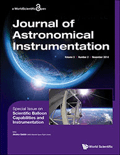
Journal of Astronomical Instrumentation
Scope & Guideline
Exploring New Horizons in Astronomical Research
Introduction
Aims and Scopes
- Instrument Design and Development:
The journal emphasizes the design and development of new instruments and systems for astronomical observations, including antennas, spectrometers, and imaging devices. - Data Acquisition and Processing Techniques:
Research on novel data acquisition systems and processing techniques is a core area, reflecting the journal's commitment to improving data quality and analysis in astronomical research. - Radio Astronomy Innovations:
The journal consistently focuses on advancements in radio astronomy, including techniques for mitigating interference and improving the sensitivity of radio telescopes. - Experimental and Theoretical Studies:
The integration of experimental validation with theoretical approaches is a hallmark of the journal, showcasing studies that bridge the gap between theory and practical application. - Cross-Disciplinary Applications:
The journal also explores cross-disciplinary applications of astronomical instrumentation, including its use in other fields such as atmospheric science and planetary exploration.
Trending and Emerging
- Ultra-Wideband Technologies:
There is a growing focus on ultra-wideband technologies, particularly in antenna design and signal processing, which are essential for improving the detection of transient phenomena such as fast radio bursts. - Integration of AI and Machine Learning:
The application of artificial intelligence and machine learning techniques for data analysis and instrument control is becoming increasingly prominent, reflecting a broader trend in scientific research towards automation and intelligent systems. - Unidentified Aerial Phenomena (UAP) Research:
The investigation of UAPs is emerging as a significant theme, with studies focusing on detection and characterization through advanced instrumentation, indicating a societal interest in aerial phenomena. - Compact and Low-Cost Instrumentation:
There is a trend towards developing compact, cost-effective instruments that can be deployed in various settings, including suborbital and small satellite missions, catering to a wider range of research initiatives. - Interferometric Techniques:
Research on interferometric techniques is on the rise, particularly for cosmological studies and radio astronomy, as these methods provide enhanced resolution and sensitivity for astronomical observations.
Declining or Waning
- Traditional Optical Instrumentation:
There has been a noticeable decrease in publications focused solely on traditional optical instrumentation, possibly due to the increasing sophistication of digital and automated systems that reduce the need for conventional optical setups. - Static Imaging Techniques:
Static imaging and observational methods are appearing less frequently, likely as the field moves towards dynamic and real-time imaging systems that can capture transient astronomical events. - Basic Calibration Techniques:
The journal has seen a reduction in papers solely dedicated to basic calibration techniques, as more emphasis is now placed on innovative calibration methodologies that integrate advanced algorithms and machine learning.
Similar Journals

EXPERIMENTAL ASTRONOMY
Transforming Observations into UnderstandingEXPERIMENTAL ASTRONOMY, published by Springer, stands as a pivotal journal in the fields of Astronomy and Astrophysics as well as Space and Planetary Science. With an impressive Scopus ranking and a Q2 category as of 2023, the journal is recognized for its impactful contributions to experimental techniques and observations in astronomy. Covering a broad spectrum of topics from cosmic phenomena to planetary exploration, it serves as a vital platform for researchers, professionals, and students to disseminate and discuss innovative ideas and findings. The journal has evolved through various convergence years since its inception in 1989 and continues to thrive, fostering an environment for academic pursuit and collaboration. Though not an open-access journal, its rigorous peer-review process ensures high-quality publications that are essential for advancing the scientific community's understanding of the universe.
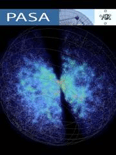
PUBLICATIONS OF THE ASTRONOMICAL SOCIETY OF AUSTRALIA
Driving Innovation in Astronomy and Astrophysics.Publications of the Astronomical Society of Australia, published by Cambridge University Press, stands as a distinguished platform for advancing knowledge in the realms of Astronomy, Astrophysics, Space, and Planetary Science. Hemmed in the United Kingdom, this journal is recognized for its outstanding contributions, reflected in its status as a Q1 journal in both Astronomy and Astrophysics, along with Space and Planetary Science categories as of 2023. With a solid impact factor, it ranks impressively at #23 within its Scopus category, firmly placing it in the competitive 75th percentile. This publication facilitates open discourse and innovative research from its inception in 1996 to the present year of 2024, providing an essential resource for researchers, professionals, and students eager to deepen their understanding of cosmic phenomena. By embracing rigorous peer-review standards and a commitment to scholarly excellence, the journal not only contributes to the scientific community but also fosters the next generation of astronomical research.

Kinematics and Physics of Celestial Bodies
Pioneering Research in Celestial DynamicsKinematics and Physics of Celestial Bodies is a prominent journal published by PLEIADES PUBLISHING INC, dedicated to the exploration and understanding of celestial mechanics and the physical properties of astronomical bodies. With an ISSN of 0884-5913 and an E-ISSN of 1934-8401, this journal has established itself as a resource for researchers in the fields of astronomy, astrophysics, and space science since its inception in 2009. The journal is indexed in Scopus, where it currently ranks in the fourth quartile for both Astronomy and Astrophysics and Space and Planetary Science, making it a valuable platform for scholarly discourse despite its ranking. Its scope encompasses a range of topics related to the kinematics and physical characteristics of celestial objects, aiming to facilitate a better understanding of their dynamics and interactions within the universe. Although it does not operate under an open access model, the journal provides essential insights and findings, catering to the academic needs of researchers, professionals, and students engaged in the study of the cosmos. The journal's commitment to advancing knowledge in the various aspects of celestial physics ultimately contributes to the broader scientific community's endeavors.
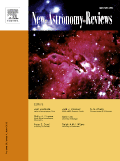
NEW ASTRONOMY REVIEWS
Navigating the Heavens: Premier Insights into Space and Planetary ScienceNEW ASTRONOMY REVIEWS, published by Elsevier Science Ltd, stands as a premier journal in the field of Astronomy and Astrophysics as well as Space and Planetary Science. Established in 1998 and operating until 2024, this journal has consistently maintained a distinguished reputation, reflected in its Q1 categorization in both subject areas for 2023. It holds an impressive Scopus ranking, placed #6 out of 104 in Earth and Planetary Sciences and #7 out of 90 in Physics and Astronomy, showcasing its critical impact with a percentile rank of 94th and 92nd, respectively. Although not an open access journal, it provides vital insights and comprehensive reviews that are essential for researchers, professionals, and students eager to advance their knowledge in contemporary astronomical research and theories. With rigorous peer review and a commitment to high-quality publications, NEW ASTRONOMY REVIEWS is an indispensable resource for the scientific community striving to uncover the mysteries of the universe.
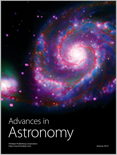
Advances in Astronomy
Advancing Knowledge in Celestial Science and Beyond.Advances in Astronomy is a prestigious open-access journal published by HINDAWI LTD, dedicated to the field of astronomy and astrophysics. Established in 2008, the journal aims to disseminate significant research findings and advancements in the understanding of celestial phenomena, planetary sciences, and the intricate workings of the universe. With an impact factor that reflects its relevance in the scholarly community, Advances in Astronomy holds a commendable rank of Q3 in both Astronomy and Astrophysics as well as Space and Planetary Science categories, indicating its importance within these fields. The journal also showcases a commitment to open-access publishing, ensuring that research is readily available to both the scientific community and the public. Researchers, professionals, and students alike are encouraged to contribute to this dynamic forum to share knowledge and foster collaboration in exploring the wonders of the cosmos.
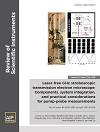
REVIEW OF SCIENTIFIC INSTRUMENTS
Pioneering Innovations in Instrumentation and MedicineWelcome to the Review of Scientific Instruments, an esteemed journal published by AIP Publishing that has been a cornerstone in the field of scientific instrumentation since its inception in 1930. With an ISSN of 0034-6748 and E-ISSN of 1089-7623, this journal serves as a vital platform for the dissemination of innovative research and advancements in both Instrumentation and Medicine, categorized in Q3 quartiles in 2023. The journal has proudly maintained its relevance, forecasting continued publication through 2024, while providing critical insights that influence contemporary practices in various scientific domains. The impact factor reflects its contribution to the academic community, making it an invaluable resource for researchers and professionals seeking to stay at the forefront of scientific progress. Although Access is not open, the rigorous peer-review process ensures that published works are of the highest quality, making the Review of Scientific Instruments a must-read for anyone involved in the intricate world of experimental science and technological innovations.

Geoscientific Instrumentation Methods and Data Systems
Empowering Research with Cutting-Edge Geoscientific Tools and TechniquesGeoscientific Instrumentation Methods and Data Systems, published by COPERNICUS GESELLSCHAFT MBH, is a distinguished open-access journal dedicated to the dissemination of innovative methodologies, advanced instrumentation, and comprehensive data systems in the earth sciences. With an ISSN of 2193-0856 and an E-ISSN of 2193-0864, this journal has been paving the way for insightful research since its inception in 2012. Based in Germany, it serves a global audience interested in atmospheric science, geology, and oceanography, reflected in its impressive Scopus rankings and recent categorizations as Q2 and Q3 in these vital fields. The journal’s mission is to foster interdisciplinary collaboration and facilitate knowledge exchange, providing a platform for researchers and professionals to share significant advancements and challenge the frontiers of geoscientific instrumentation and methods. As an open-access journal, it ensures that pivotal research findings are accessible to a wider audience, promoting inclusivity and rapid dissemination of knowledge critical to addressing global challenges in earth and planetary sciences.

Romanian Astronomical Journal
Advancing cosmic knowledge, one article at a time.Welcome to the Romanian Astronomical Journal, a distinguished publication operating under the esteemed EDITURA ACAD ROMANE, dedicated to advancing the field of Astronomy and Astrophysics. With a rich tradition rooted in Romania, this journal aims to foster scholarly discourse and disseminate pivotal research findings within the cosmic sciences. Although currently not designated as Open Access, the journal remains committed to ensuring that its content meets rigorous academic standards. The Romanian Astronomical Journal holds a commendable position in the academic community, achieving a Q3 ranking in Astronomy and Astrophysics and a Q4 ranking in Space and Planetary Science for 2023, reflecting its contribution to the scientific landscape. With a focus on originality and scholarly excellence, this journal serves as a vital resource for researchers, professionals, and students alike, promoting a deeper understanding of the universe and our place within it. Positioned at the intersection of innovative research and practical application, the Romanian Astronomical Journal invites contributions that push the boundaries of knowledge in our field.
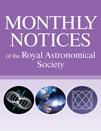
MONTHLY NOTICES OF THE ROYAL ASTRONOMICAL SOCIETY
Fostering Innovation in the Study of Celestial Phenomena.The MONTHLY NOTICES OF THE ROYAL ASTRONOMICAL SOCIETY (MNRAS), published by Oxford University Press, serves as a premier platform for the dissemination of significant research in the fields of Astronomy, Astrophysics, and Space and Planetary Science. Established in 1913 and with an impressive impact factor reflected in its 2023 Q1 rankings—13th in Earth and Planetary Sciences and 14th in Physics and Astronomy—this journal is renowned for its rigorous peer-reviewed articles, fostering advancements in our understanding of the universe. Researchers, professionals, and students alike benefit from its rich content, which spans a vast array of topics within its scope, from stellar dynamics to planetary formation. While the journal does not currently offer Open Access options, the scholarly contributions published herein are invaluable for pushing the boundaries of contemporary scientific inquiry and ensuring that the latest findings reach an engaged audience globally.
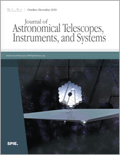
Journal of Astronomical Telescopes Instruments and Systems
Exploring New Horizons in Astronomical Systems and TechnologiesJournal of Astronomical Telescopes Instruments and Systems is a prestigious academic journal published by SPIE-SOC PHOTO-OPTICAL INSTRUMENTATION ENGINEERS, focusing on groundbreaking research in the fields of astronomy and astrophysics, instrumentation, and optical sciences. With an ISSN of 2329-4124 and an E-ISSN of 2329-4221, this journal has steadily established its relevance in the scientific community, achieving a respectable Q2 ranking across various important categories, including Astronomy and Astrophysics and Control and Systems Engineering in the year 2023. Spanning research from its inception in 2015 to projections through 2024, the journal continues to serve as a critical platform for disseminating innovative findings that advance our understanding of astronomical instruments and systems. As researchers, professionals, and students seek to stay at the forefront of technological advancements and scientific inquiries, the Journal of Astronomical Telescopes Instruments and Systems is an invaluable resource. The journal provides a valuable venue for peer-reviewed articles that stimulate discussion and drive forward the exploration of astronomical phenomena and instrumentation techniques, making it essential reading for those invested in the future of space sciences.